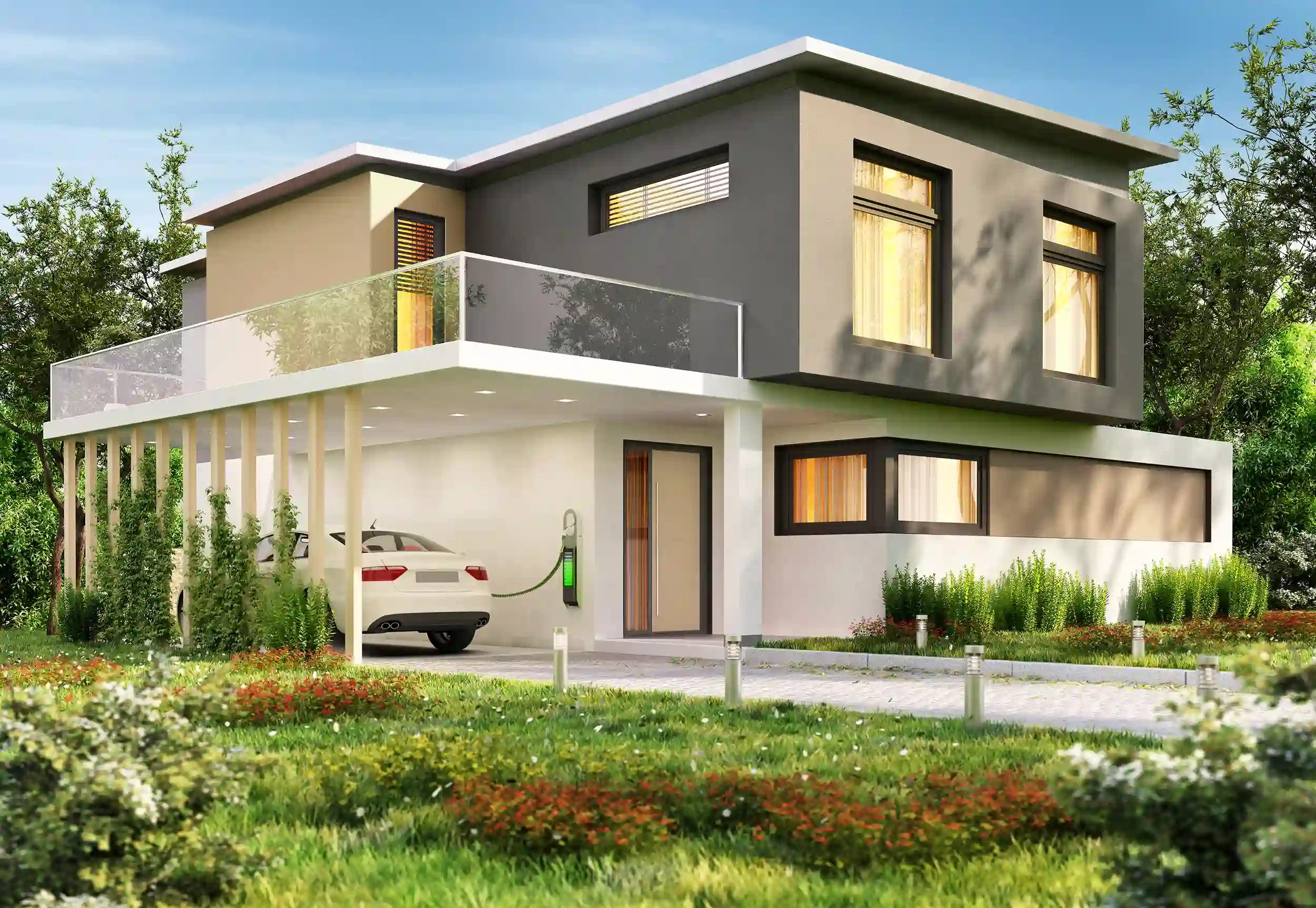In a world where academia and sustainability converge, energy efficiency becomes paramount. By intertwining innovative campus practices with eco-friendly home strategies, we can revolutionize energy consumption. Explore the synergy between smart campuses and greener homes for a sustainable lifestyle with the latest energy-saving solutions. Unravel the web of college innovations and energy-efficient home tips for a harmonious future.
Key Takeaways
- Invest in ENERGY STAR products for energy efficiency
- Implement zero waste programs through recycling and waste reduction
- Use smart technologies like smart thermostats and energy monitoring systems
- Improve insulation and use energy-efficient appliances for a greener home environment
Understanding Energy Efficiency
Understanding Energy Efficiency is crucial for homeowners looking to reduce their energy consumption and lower their utility bills. Energy efficiency refers to using less energy to achieve the same level of performance, resulting in reduced energy waste and cost savings. In the context of homes, this means optimizing the use of appliances, heating, cooling, lighting, and insulation to minimize energy usage without sacrificing comfort.
One practical way to improve energy efficiency in homes is by investing in energy-efficient appliances and electronics. Look for products with the ENERGY STAR label, indicating they meet high energy efficiency standards set by the Environmental Protection Agency. Additionally, sealing air leaks, upgrading insulation, and installing programmable thermostats can significantly reduce energy consumption.
College Innovations in Sustainability
Innovative sustainability practices at colleges are revolutionizing environmental stewardship and resource management. Many institutions are leading the way in implementing cutting-edge solutions that promote a greener future. Here are some key ways colleges are innovating in sustainability:
- Renewable Energy Initiatives: Colleges are increasingly investing in renewable energy sources such as solar panels and wind turbines to reduce their carbon footprint and reliance on traditional fossil fuels.
- Zero Waste Programs: Through comprehensive recycling programs and waste reduction strategies, colleges aim to divert as much waste as possible from landfills, promoting a circular economy mindset among students and staff.
- Green Building Practices: Many colleges are constructing new buildings or retrofitting existing ones to meet high environmental standards, incorporating features like energy-efficient lighting, efficient heating and cooling systems, and sustainable materials to minimize environmental impact.
These innovative practices not only benefit the campus environment but also serve as valuable learning opportunities for students, inspiring the next generation of sustainability leaders.

Implementing Eco-Friendly Practices
Implementing eco-friendly practices is crucial for reducing environmental impact and promoting sustainability in various settings. One effective way to start is by optimizing energy usage through the installation of energy-efficient appliances and LED lighting. These upgrades not only lower electricity bills but also decrease the overall carbon footprint of a home or campus. Additionally, implementing proper waste management strategies such as recycling and composting can significantly reduce the amount of waste that ends up in landfills, contributing to a cleaner environment.
Another eco-friendly practice to consider is water conservation. Installing low-flow fixtures and being mindful of water usage can lead to substantial savings in water consumption. Rainwater harvesting systems can also be integrated to collect and reuse rainwater for purposes like irrigation, reducing the reliance on traditional water sources.
Furthermore, incorporating sustainable materials in construction and opting for renewable energy sources like solar panels can further enhance the eco-friendliness of a home or campus. By adopting these practices, individuals and institutions can actively contribute to a greener, more sustainable future.
Smart Technologies for Energy Savings
Smart technologies for energy savings are revolutionizing the way homes and campuses manage their energy consumption efficiently. These innovative solutions not only help reduce energy bills but also contribute to a more sustainable environment. Here are three ways smart technologies are making a difference:
- Smart Thermostats: Smart thermostats learn your schedule and temperature preferences to optimize heating and cooling, reducing energy waste when you’re away.
- Energy Monitoring Systems: These systems provide real-time data on energy usage, helping you identify areas where energy is being wasted and make adjustments accordingly.
- Automated Lighting: Smart lighting systems can be programmed to turn off when a room is unoccupied or adjust brightness based on natural light levels, saving energy without sacrificing comfort.
Creating a Greener Home Environment
Enhancing the sustainability of residential spaces involves adopting eco-friendly practices that promote energy efficiency and reduce environmental impact. Creating a greener home environment encompasses various strategies that can significantly decrease energy consumption and foster a more eco-conscious lifestyle.
One key aspect of creating a greener home is improving insulation. Proper insulation helps regulate indoor temperatures, reducing the need for excessive heating or cooling. Additionally, utilizing energy-efficient appliances and lighting fixtures can lead to substantial energy savings over time. Investing in appliances with high Energy Star ratings can significantly decrease electricity usage.
Furthermore, incorporating renewable energy sources such as solar panels or wind turbines can further reduce a home’s carbon footprint. These sustainable energy solutions not only help the environment but can also lead to long-term cost savings on energy bills.
Frequently Asked Questions
How Can Homeowners Take Advantage of Tax Incentives for Energy-Efficient Upgrades?
To take advantage of tax incentives for energy-efficient upgrades, homeowners should research federal, state, and local programs. Consult with a tax professional to ensure eligibility. Keep records of expenses and certifications to claim credits or deductions accurately.
What Are Some Common Myths About Energy-Efficient Home Improvements?
Common myths about energy-efficient home improvements include the belief that they are costly upfront, that they won’t make a significant impact, or that they are only relevant in extreme climates. Education and awareness can dispel these misconceptions.
Are There Any DIY Projects That Can Help Improve Energy Efficiency in Homes?
DIY projects can greatly enhance energy efficiency in homes. Simple tasks like sealing gaps, insulating pipes, and installing programmable thermostats can lead to substantial energy savings. Engaging in these projects empowers homeowners to actively contribute to a greener environment.
How Can Renters Incorporate Energy-Efficient Practices in Their Living Spaces?
Renters can incorporate energy-efficient practices by using LED lighting, sealing windows and doors, adjusting thermostat settings, utilizing power strips, and choosing energy-efficient appliances. These steps can help reduce energy consumption and lower utility bills.
What Are Some Innovative Ways Colleges Are Educating Students About Sustainable Living Practices?
Colleges are educating students about sustainable living practices through innovative initiatives like campus-wide recycling programs, energy-efficient building designs, and sustainability-focused courses. These efforts aim to instill environmental consciousness and promote eco-friendly behaviors among the student body.
Conclusion
In conclusion, the integration of energy-efficient practices from smart campuses into residential spaces is crucial for creating a more sustainable future. By understanding and implementing eco-friendly tips inspired by college innovations, individuals can reduce their carbon footprint and contribute to a greener home environment.
Utilizing smart technologies and embracing sustainable practices are key steps towards achieving energy efficiency and promoting environmental consciousness in our daily lives. Let us all strive towards a more sustainable future by adopting these energy-saving solutions.
You may also like to read:
DIY Window Maintenance Guide: Keeping Your Home Shine




